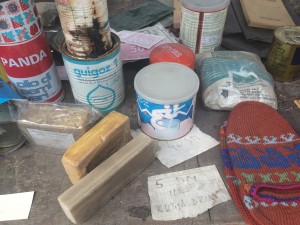If a German – at least born in the early 1980s – travels to Bosnia and Herzegovina, there is one thing that makes him immediatly feel at home: The currency. Until 1998 there were three official currencies: The Yugoslav dinar, the Bosnian Dinar and the Croatian kuna. Unofficially one foreign currency was frequently used: The German mark (D-Mark). During the siege it was the most used within Sarajevo.

After the war a currency was needed that had no ethnic connotations. As the German mark was well known, a similar currency was created and linked 1:1 to the D-Mark. In the beginning, konvertibilna marka (KM, ISO-code: BAM) and German mark (DM) where used in parallel, having the same value. Nowadays, only KM bills and coins are used.
After Germany switched to the Euro in 2002, the marka was linked to the euro having an exchange ratio of 1:1,95583 – an odd number well known to Germans. Having konvertibilna marka in hand we are reminded on the old times. Especially the 5 KM coin brings up good memories, as it was the small present we received as children from our grandparents, aunts and uncles. And it still feels as valuable as in the 1990s.

